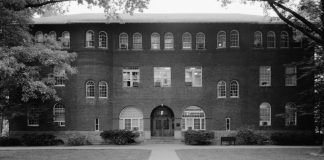NOVEMBER 2, 2018
 Former President Barack Obama pumps up the crowd during a campaign rally for Wisconsin Democratic candidates in Milwaukee. – Reuters/SARA STATHAS
Former President Barack Obama pumps up the crowd during a campaign rally for Wisconsin Democratic candidates in Milwaukee. – Reuters/SARA STATHAS
MIAMI — Republican U.S. President Donald Trump and his Democratic predecessor Barack Obama were set to sketch out sharply contrasting visions of the nation’s future on Friday in bids to stir voter enthusiasm ahead of elections that will determine control of Congress.
In the run-up to Tuesday voting, Trump has hammered relentlessly on his hard-line immigration theme in his frequent rallies supporting Republican candidates, painting a grim and sometimes misleading impression of his rivals’ political goals. Obama, who is due to campaign for African-American gubernatorial candidates in two Southern states, has decried the “politics of division.”
Obama appears first, in Miami with gubernatorial candidate Andrew Gillum, who faces former congressman Ron DeSantis, a strong Trump backer, and U.S. Senator Bill Nelson, who is being challenged by the outgoing governor, Rick Scott. A Reuters/Ipsos/UVA Center for Politics poll this week showed both Democrats leading with voter enthusiasm for Gillum, the young and liberal Tallahassee mayor, appearing to help Nelson and other Democratic candidates on the ballot.
Trump is set to back Republican challengers to incumbent Democratic U.S. senators in West Virginia and Indiana, states he won in the 2016 presidential election.
Opinion polls and non-partisan forecasters generally show Democrats as having strong chances of winning 23 additional seats and taking a majority in the U.S. House of Representatives, which they could use to launch investigations into Trump’s administration and block his legislative agenda.
Republicans are generally expected to retain control of the U.S. Senate, whose powers include confirming Trump’s nominations to lifetime seats on the Supreme Court.
Interest in the vote has been unusually high for a year when Congress but not the White House is at stake, according to early voting tallies. More than 27 states have recorded more early votes at this point in the campaign than they did in all of 2014, according to The Election Project at the University of Florida, which tracks early turnout.
Texas had already recorded more votes than it did in all of 2014, including Election Day, the group said.
After Miami, Obama will head to Georgia to campaign for Stacey Abrams, a former state legislator aiming to become the United States’ first black female governor.
Obama’s challenge will be motivating the diverse coalition of voters who elected him in 2008 and 2012 but failed to turn out in as large numbers in 2016, said Patrick Hickey, a professor of political science at West Virginia University.
 President Trump boards Air Force One prior to departing on a campaign trip from Joint Base Andrews, Maryland. – Reuters/Carlos Barria
President Trump boards Air Force One prior to departing on a campaign trip from Joint Base Andrews, Maryland. – Reuters/Carlos Barria
“Hillary Clinton lost because the Obama coalition didn’t show up at the polls — he’s trying to mobilize folks who like him and trust him in Georgia and Florida,” Hickey said.
In West Virginia, Trump will campaign for a third time with Patrick Morrisey, who aims to unseat Democratic Senator Joe Manchin.
Two new polls this week showed Manchin’s once-comfortable lead over Morrisey dwindling to 5 percentage points, which the Democrat’s supporters blame in part on Trump’s repeated visits.
“I know Trump coming so often is making an impact,” said Jim Hoyt, chairman of the Morgan County Democratic Party in northeast West Virginia. Like other Democrats in the state, he still expects Manchin to win.
Trump also will go to Indiana to appear on behalf of Mike Braun, who is trying to replace Joe Donnelly in the Senate.
Courtesy/Source: Reuters










































































































